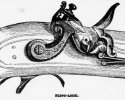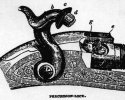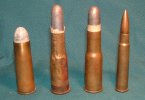Heartland
master brummie
Before guns and rifles had the technology to fire bullets, there was the long period of use of what was called the gun lock
These started with the flint lock, went through the percussion lock era and there were also various types of safety locks
Birmingham and South Staffordshire were involved in making the parts and there were trades such as gun lock forger and gun lock filer. Component parts also included springs
Such a complex history deserves further comment.
These started with the flint lock, went through the percussion lock era and there were also various types of safety locks
Birmingham and South Staffordshire were involved in making the parts and there were trades such as gun lock forger and gun lock filer. Component parts also included springs
Such a complex history deserves further comment.








